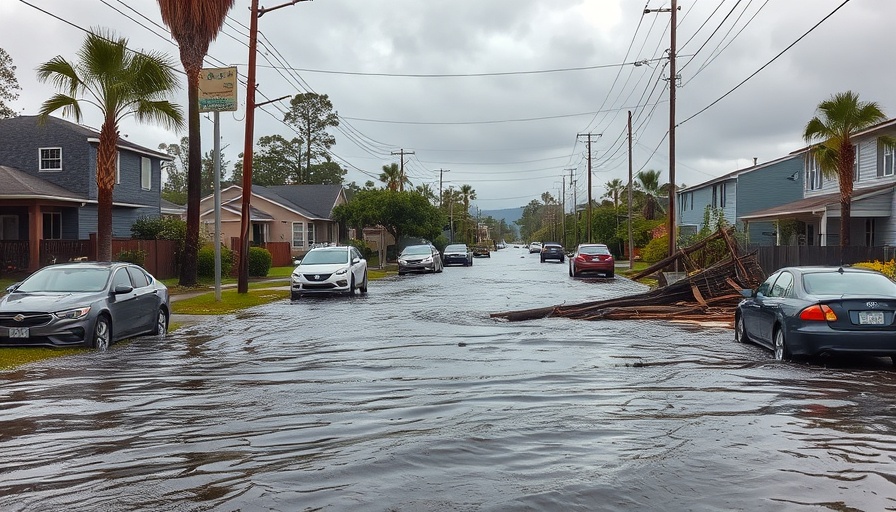
Reflecting on the Aftermath of Hurricane Debby
As the sun rises over Tampa Bay, the scars left behind by Hurricane Debby begin to fade but remain very much present. One year ago, on August 5, 2024, the storm made landfall near Steinhatchee, triggering a significant series of events that reshaped not only the landscape but the lives of those who call this area home. What was initially viewed as a “calm” storm by many, including lonesome riverfront resident Cody Dittebrand, had disastrous aftereffects. In the days following Debby, homes were submerged, leaving families stranded and grappling with the formidable task of recovery.
Community Impact and Evacuations
Hurricane Debby’s impact was felt profoundly across South Hillsborough County, where residents along the Alafia River were forced to evacuate due to uncontrollable flooding. The cumulative rainfall exceeded a foot in some locations, while coastal storm surges compounded the crisis, leading to record flooding events. Cody's recount of his family having to kayak out of their own home highlights a very poignant and often overlooked aspect of severe weather events: the emotional toll and practical challenges that linger long after the winds die down.
The Long Road to Recovery
In the wake of the hurricane, the recovery process has been fraught with delays and uncertainty. Dittebrand, who has resided near the Alafia River for three decades, described how FEMA's response lagged for almost four months before assistance arrived. The frustration of waiting for help can be almost as harrowing as enduring the storm itself. For many in the region, rebuilding is also complicated by indecision about relocating versus repairing damaged structures. Families grapple with the dilemma of whether to stay and weather future storms or search for safer ground.
Environmental Consequences: Erosion and Flooding
The hurricane's fury did not just impact homes—it left eroded beaches and altered landscapes in its wake. The Tampa Bay area’s beautiful coastline has been historically dynamic, but this erosion marks a significant shift in the environment. Erosion, coupled with flooding, poses both short-term and long-term challenges for local wildlife and economies that depend on tourism. Residents and environmentalists are now forced to consider sustainable practices that can mitigate such storm damages in the future.
Future Preparedness: Lessons Learned
As communities reflect on Hurricane Debby’s impact, they are also looking ahead. The lessons from this event emphasize the necessity for preparedness on both personal and governmental levels. Planning for emergency evacuations, developing robust infrastructure to withstand heavy rainfall, and enhancing community resources to aid recovery can save lives during critical times. Each hurricane season presents an opportunity to rethink strategies and prepare for future events that grow increasingly unpredictable due to climate change.
A Call for Community Resilience
For those who survived Hurricane Debby, the resilience displayed is commendable. As Cody Dittebrand eloquently puts it, “We haven’t really fixed everything up inside quite yet because we don’t know if we’re going to keep this trailer.” His words embody a broader sentiment: rebuilding is not only about repairing physical structures but also restoring a sense of safety and belonging within the community. There is a profound need for solidarity among neighbors, as they bolster each other in the face of ongoing uncertainties.
Conclusion
Hurricane Debby was not just a storm; it was a pivotal moment wrapped in the complex narrative of climate-related challenges that those in Gulfport and the wider Tampa Bay area must navigate. The journey of recovery reflects a deeper struggle shared by many communities, driven by the need for resilience, preparedness, and solidarity. As we remember Debby's impacts, let's also commit to fostering a stronger, more prepared future.
 Add Row
Add Row  Add
Add 



Write A Comment